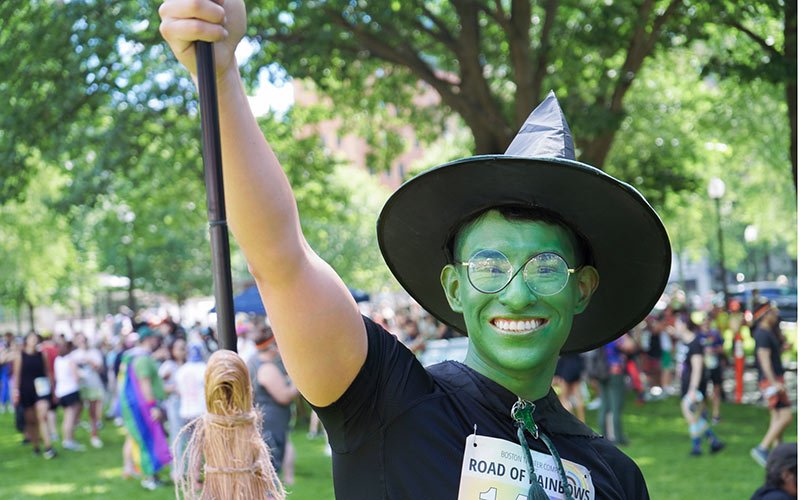
Celebrating a Green Halloween can help slash waste and reduce litter in our communities. Photo: Iryna Imago via Shutterstock.
The air is crisp, leaves rustle underfoot, and a kaleidoscope of spooky decorations brings the streets to life. Ghosts dangle from trees, pumpkins flicker with candlelight, and costumed children roam the streets, eagerly anticipating the sweet treasures of the night. Halloween is here! But behind this eerie yet enchanting evening lies a not-so-magical truth: a surge of waste, plastic, and litter that could haunt our communities long after the festivities fade.
Every year, consumers in the U.S. spend over $10 billion on Halloween purchases. That includes decorations, plastic-wrapped candy, and costumes that will eventually find their final resting place in landfills and waste incinerators. The convenience of plastic has turned a night of joy into a long nightmare of pollution for our communities, waterways, and environment.
But fear not! You can still celebrate a waste-free holiday without sacrificing your fun. Here are five tips to help you celebrate a Green Halloween and slash the waste and litter in our communities.
1. Green Up Your Halloween with DIY Decorations
As early as August, stores brim with cheaply made plastic Halloween décor that often ends up in the trash. If something catches your eye, try copying it with things you may already have at home. After all, what better way to embrace the creative spirit of the season than by bringing something back to life?
You can transform twigs, jugs, and discarded cardboard into frightening creations. And remember, the devil is in the details: Use fallen leaves, papier-mâché, and paint to ensure your project will take people’s breath away.
Even if you aren’t crafty, a Green Halloween is the perfect opportunity to explore your creative side. Potted marigolds, gourds, pumpkins, or fallen branches offer an alternative to ready your home for the season.
2. Your Green Halloween Outfit May Be Hiding in Your Friend’s Closet
Growing up in Mexico, I never had the chance to celebrate this holiday. So, I didn’t prepare a costume for my first Halloween in the U.S. I had to piece together a pirate costume from my friends’ wardrobes. That last-minute challenge became a fun and exciting tradition.
Most store-bought costumes are made of oil-based plastic and synthetic materials that take centuries to break down in a landfill. That’s terrifying because, every year, millions of Halloween costumes get thrown away after a single use.
Raiding your friends or family’s closets will ensure your disguise is unique and sustainable. You can keep a mental or digital list of costumes and accessories friends have worn. I use the notes app on my phone, where Jonathan’s red sequin blazer, Tyler’s leather boots, and Lilly’s rainbow wings have all made my list. A creative collaboration of borrowed pieces and personal flair will help you turn heads.
This tip works wonders when it comes to outfitting children, too. Grandma’s straw hat or dad’s vintage denim jacket may be the missing pieces for a spooktacular costume. It’s also a great way to connect generations and create magical, sustainable memories.
3. Pumpkins All the Way
Crafting the perfect jack-o’-lantern involves thoughtful planning from start to finish. Sadly, as the Halloween season ends, countless pumpkins end up rotting in the trash. Discarded pumpkins add over 1 billion pounds of waste annually to landfills already grappling with their unsustainable load. So, preparation is the key.
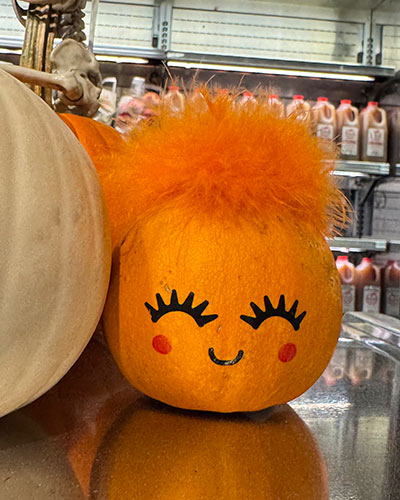
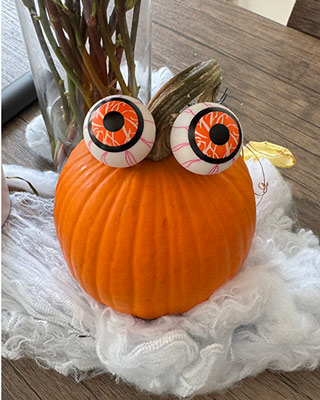
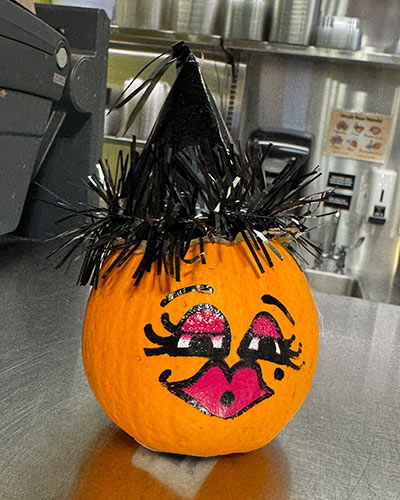
- Less Carving, More Carbing – Carved pumpkins rot quickly, but untouched ones can remain edible for up to three months. Consider ditching the carving knife and opting for adornments like flowers, twigs, or repurposed clothing. Saving your pumpkin for the kitchen will not disappoint, whether you prefer it in pie, muffins, or soup.
- Carve Consciously – If carving is your preferred route, you can still reduce waste. Prepare a container to collect seeds for roasting, make soup with the flesh, and use your pumpkin guts as substitute for canned pumpkin pure to make bread. Either route will guarantee a snack to die for. The rest can go into your compost bin.
- Composting Tips – Before tossing your pumpkin into the compost bin, strip it of all accessories and give it a hearty smash. Paint and glitter should not go in the compost – so try to avoid these materials to keep your compost free of toxins.
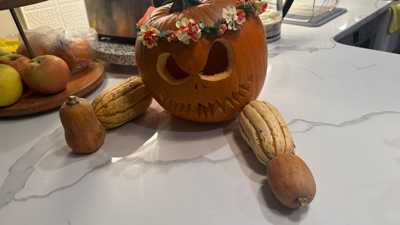
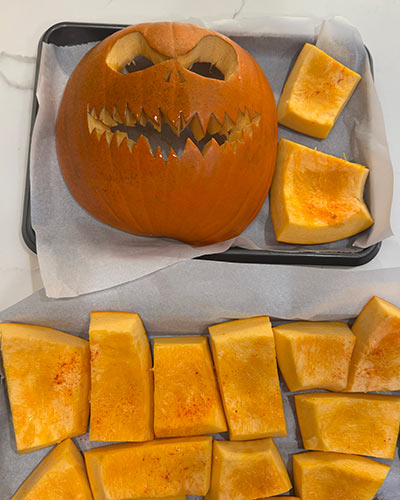
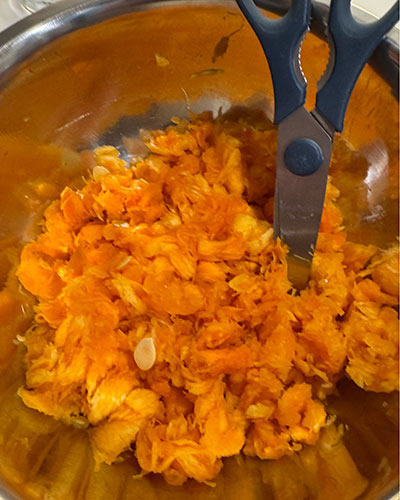
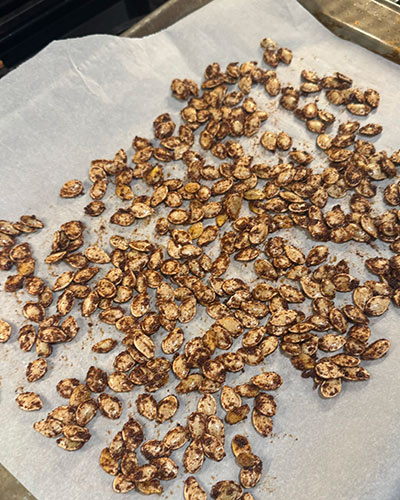
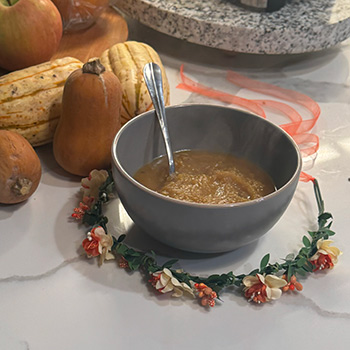
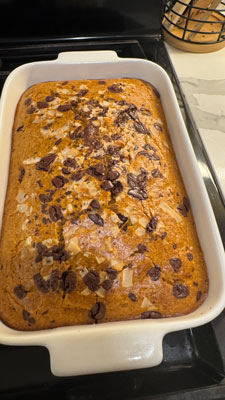
4. Treats Without the Trick
Every year for Halloween, consumers in the U.S. buy over 600 million pounds of candy. But most of these treats come in unrecyclable plastic wrappers that will sink to the bottom of a landfill. So, what are the alternatives?
Clementines and raisins will not impress the kids. But, luckily, you have many options left for treats: Plenty of chocolate bars and truffles come wrapped in foil or paper – like Hershey’s Kisses and Ferrero’s chocolates. You can also opt for boxed candy. M&Ms, Nerds, Dots, and Swedish Fish all have this option available. Want an out-of-the-box alternative? Consider handing out soda cans. Remind the trick-or-treaters to return their container to the store for 5 to 10 cents (depending on where you live) to add to their booty.
If you plan to get candy only for your family or people you know, buy in bulk or make your own concoctions – caramel apples, chocolate chip cookies, or pumpkin muffins.
5. Host a Green Halloween Party
What better way to get a head start on your Halloween preparation than hosting a Green Halloween party? Put these tips together to help friends and family embrace the waste-free spirit.
Let’s cover the basics:
- Decorations –Set the scene with your DIY décor. You can even provide some extra materials for your guests to make and take home their creations.
- Costumes – Arrange a costume swap, encouraging friends to exchange costumes and accessories they or their kids have worn before. It’s a fun activity that can replace the need for new store-bought costumes.
- Candy – Instead of giving candy away, set up a candy buffet with items that come in plastic-free packaging (or no packaging at all).
- Food – Your guests will surely love your pumpkin seeds and candy – but for larger gatherings, plan in advance to avoid leftovers.
Finally, enjoy yourself, capture plenty of photos, and remember to tag us on social media. Have a happy Green Halloween!



